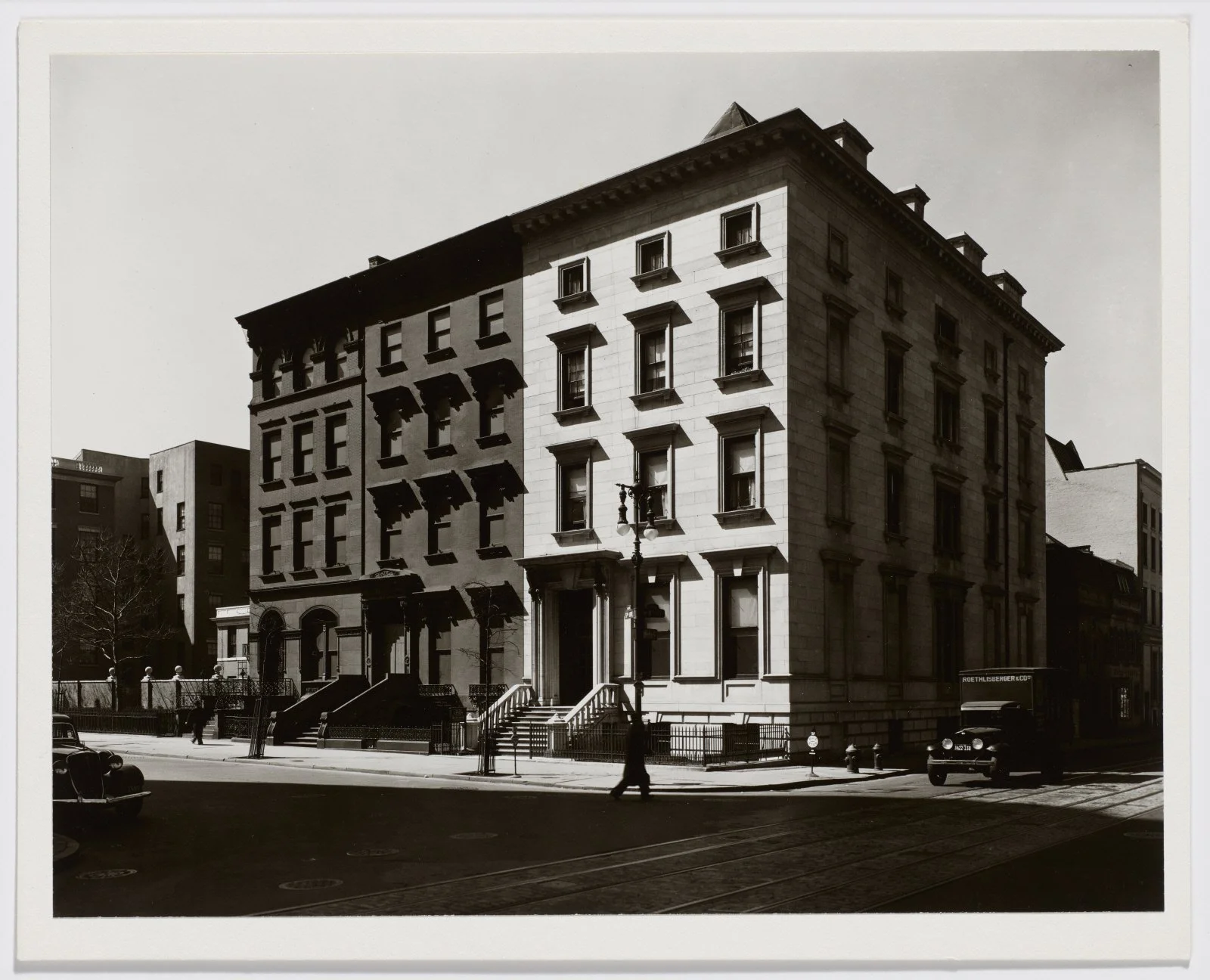BERENICE ABBOT
Berenice Abbott, Fifth Avenue, nos. 4,6,8, New York, 1936, printed 1982, Gelatin silver print. Gift of A&M Penn Photography Foundation by Arthur Stephen Penn and Paul Katz, 2007. The Clark Art Institute, 2007.
Afterimage by Arturo Soto:
This photograph by Berenice Abbott from her astonishing project Changing New York (1935–39) has been my desktop background for the past five years, as it reflects my interests in the urban landscape, biography, affect, paratexts, composition, and technique. As with other photographs I love, I secretly wish I’d made it, despite the temporal impossibility. I admire the picture’s power of suggestion: the stark tonal contrast between the occupied brownstone and its (boarded-up?) neighbours seems to be a commentary on social division and economic marginalization, or perhaps more symbolically, a parable for societal good and evil in and the proximity of these two poles. However, the caption that appears in the 1939 publication of the series complicates such a straightforward interpretation of the photograph: “Built in the mid-eighties for three Rhinelander daughters, the houses at the southwest corner of Fifth Avenue and Eighth Street present a rising curve of elegance. Henry J. Hardenbergh, architect of the old Waldorf-Astoria, the Hotel Albert and the Third Avenue Car Barns, designed all three. No. 8 was once the home of the art collection which formed a part of the original Metropolitan Museum of Art.”
The history of the buildings does not reflect the social division that a cursory look might suggest. A related close-up, for instance, shows the grandeur of the marble masonry entrance of No. 8 obscured in this wide shot. We can only speculate on the meaning of the other details not mentioned in the caption: the truck’s company name, the broad and slender water hydrants standing next to a dwarf bus stop sign like the lineup of a comedy troupe, or the spatial connection between the tram tracks, the sewers, and the two cars that bookend this NOHO corner. The original caption by Elizabeth McCausland – recouped by Sarah M. Miller in her recent book Documentary in Dispute – stresses the element of economic privilege even further, stating that the corner brownstone was “the first marble house built in the city,” but also asserts that the moral values represented in the picture are more ambiguous than the bright contrast suggests.
This image has been printed in slightly different ways, as it used to be more common in the past. The Museum of the City of New York, which houses part of the project’s archive, has nine prints of Fifth Avenue Houses, Nos. 4, 6, 8. One of these is a contact print made from the 8x10 inch negative with a distinct sepia tone and less contrast than the enlargements. As such, the potential for the buildings to serve as an analogy for prosperity and hardship gets diminished, a reminder that technique can also define meaning. It’s easy to get lost comparing the different versions of this image in American collections and the variety of their particularities. Some bear a Federal Art Project stamp on the verso; others feature Abbott’s signature and the recto; some are vintage prints, while others were printed as late as the 1980s in a much larger size (20x24 in) by the artist’s estate, etc. From what I can appreciate online, the print at The Clark (pictured here) seems to be the most tonally balanced, although the version in the book is even darker.
I’m interested in how Abbot’s project is unsentimental but not neutral. She tried to convey a resentment for the loss of vernacular architecture and the ways of life that depended on those buildings. Her reputation and biography have become inseparable from the content of those pictures and the history of those sites (for instance, the building on Greenwich Village where Abbott and McCausland lived while making Changing New York is listed in the NYC LGBT Historic Sites Project). As the historian Bonnie Yochelson reminds us, “it was her story as much as her photographs that captured the public’s imagination and made her an art-world celebrity.” This amalgamation of art and life has persisted over time, as publications and exhibitions consistently reference the anecdotal dimension of the work, which is now perceived to reflect the artist’s desires with great authenticity. For me, Abbott’s ingenious use of natural light in Fifth Avenue Houses, Nos. 4, 6, 8, and the abundance of details the scene offers articulates her sensitive perception of the urban landscape, resulting in a complex picture in which the elements you see, what they suggest, and what the artist intended them to communicate go in different yet strangely complementary directions. “Pictures”, wrote Abbott, “are wasted unless the motive power which impelled you to action is strong and stirring.” I’m grateful for her intricate motives, which produced a picture so full of life.
